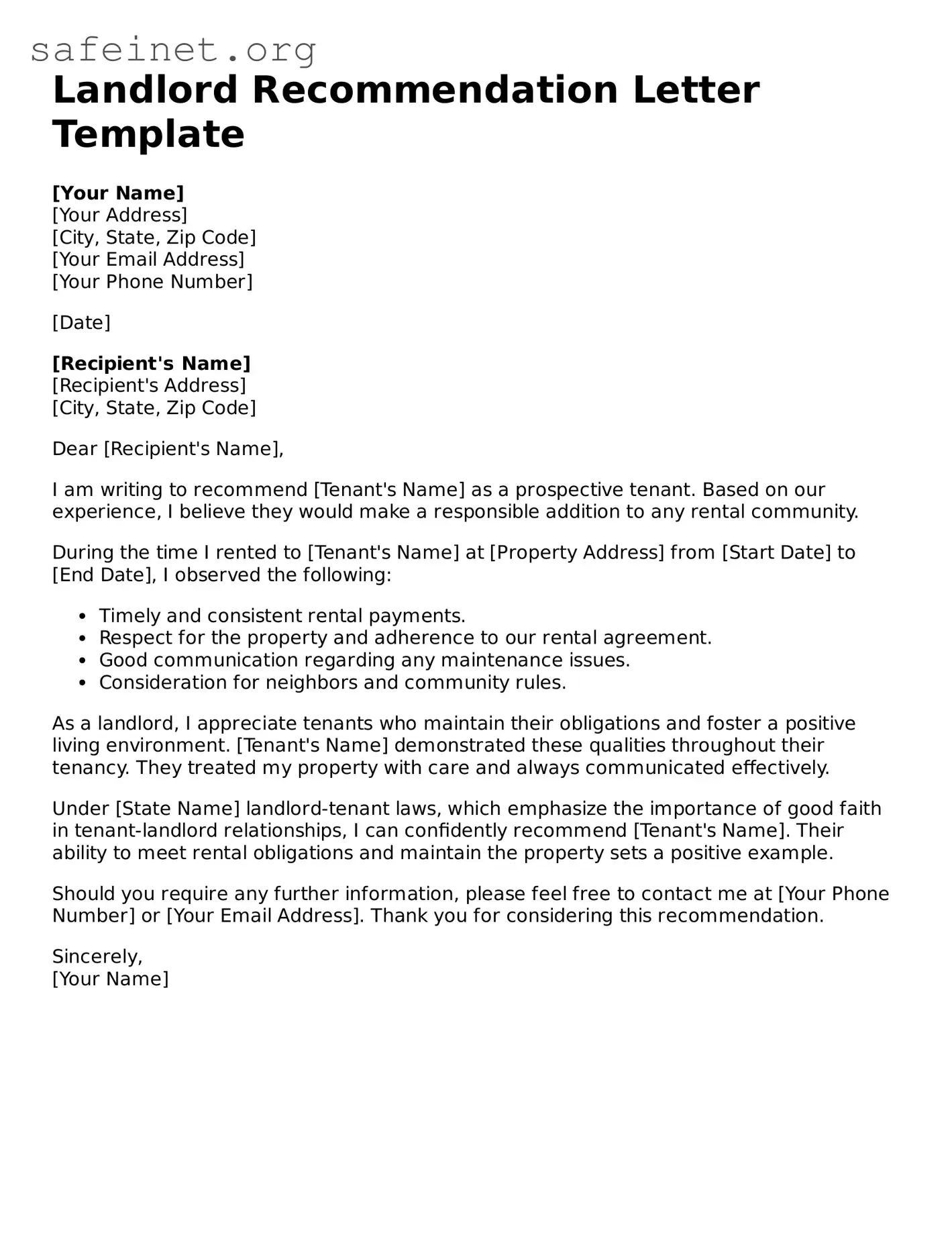The Landlord Recommendation Letter form shares similarities with a Rental Reference Letter. Both documents serve the purpose of providing potential landlords with insights about a tenant’s character and reliability. A Rental Reference Letter typically comes from a previous landlord or property owner, detailing the tenant's payment history, behavior during their tenancy, and any other relevant interactions that would inform a prospective landlord. Like the recommendation letter, it aims to assure the new landlord that the tenant is responsible and will uphold rental agreements.
Next, the Tenant Verification Letter also draws parallels to the Landlord Recommendation Letter. It is usually requested by a new landlord to confirm a tenant's rental history, lease terms, and timely payments. This verification is factual and straightforward, providing necessary information that paves the way for a smooth tenant application process. Like the recommendation, it seeks to establish trust and reliability for the applicant, reducing uncertainties for the landlord.
The Employment Verification Letter resembles the Landlord Recommendation Letter in that it, too, vouches for an individual’s integrity and reliability, albeit in the workplace rather than in a rental scenario. This document comes from an employer and outlines an employee's position, duration of employment, and salary, which can be crucial for landlords assessing a tenant's ability to pay rent consistently. Both documents establish a narrative of responsibility, reinforcing beneficial traits that landlords look for in applicants.
A Character Reference Letter can also be compared to the Landlord Recommendation Letter. This letter, often written by a friend, colleague, or community member, highlights an individual's personal qualities and reliability. Like the recommendation letter from a landlord, it provides a more personal account of a tenant’s character, thus helping landlords get a more rounded view of their potential tenant. Both types of letters aim to build a sense of trust and confidence.
The Lease Agreement itself has similarities with the Landlord Recommendation Letter. While one is a formal document outlining the terms of tenancy, the recommendation letter indirectly addresses the qualities and behaviors a tenant is likely to exhibit during that lease period. When potential landlords consider a rental application, the terms of the lease and the supporting recommendation may work together to present a full picture of what a tenancy will look like.
Another related document is the Application for Rental Housing. Much like the Landlord Recommendation Letter, the rental application seeks to provide information about the tenant, including personal details, rental history, and employment information. While the application is more administrative and fact-driven, both documents help the landlord make informed decisions when evaluating tenants and their suitability for renting.
The Background Check Report can also be likened to the Landlord Recommendation Letter. This report digs into a tenant’s criminal background and credit history, providing landlords with a broader understanding of the applicant’s reliability as a renter. While the recommendation letter focuses on personal experiences and attitudes of previous landlords, the background check report presents data and findings, both of which contribute vital insights for landlords making approval decisions.
Lastly, the Eviction Record serves as a important comparison to the Landlord Recommendation Letter. While the recommendation letter aims to highlight a tenant’s strengths, an eviction record directly reveals a potential tenant’s past issues with tenancy. Understanding a tenant's eviction history can indicate risks associated with leasing them property. Thus, while a recommendation letter creates a favorable impression, eviction records provide critical insights into potential warning signs.
